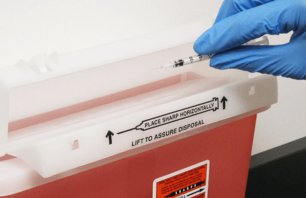Addressing a Significant Drug Diversion Threat
Drug diversion—the theft, misuse or tampering of controlled substances meant for clinical use—is a real concern in health care organizations. According to the National Center for Biotechnology Information (NCBI), 10 percent to 15 percent of all health care workers misuse drugs and alcohol at some point in their careers. Given the stress staff are under and their ready access to some of the most powerful narcotics available, a perfect storm may be brewing in your facility which you may not be aware of. Plus, if you don’t have the proper policies, procedures and training in place, you may be inadvertently increasing the risk of diversion.
Here are three critical elements that can ensure a safer workplace environment.
Clear and Comprehensive Controlled Substance Policies
Organizations should have detailed policies and procedures for storing, dispensing and wasting controlled drugs. These documents should provide clarity on the entire life cycle, addressing things like:
• Drug Enforcement Agency (DEA) registration
• Separation of staff duties for ordering, receiving and stocking controlled substances
• Appropriate drug storage
• Automated dispensing
• Witnessing requirements for storage, distribution and wasting
• Wasting and disposal procedures
Frequent Staff Training
Having comprehensive policies is not sufficient to prevent drug diversion. Staff should receive regular training on the risks of substance theft, the role they play in preventing it and how to reliably follow policy and procedure. Using real-world examples and mock scenarios can be especially helpful in underscoring and solidifying key points. Training should occur on a regular basis as well as during orientation.
Appropriate Drug Waste Receptacles
Staff cannot dispose of controlled substances with other pharmaceutical waste. To ensure proper disposal, organizations may want to consider using specially designed containers that house a deactivating agent, which neutralizes the drugs on contact.
Robust Documentation of Controlled Substances
Per the DEA, staff must document controlled substances as they move through the facility. This documentation should include the drug’s DEA number, the names of staff handling the medication, the names of witnesses, and the timing of storage, distribution and wasting. The more detailed the information the better because this allows an outside auditor to track the controlled substance’s journey throughout the facility.
Seek Expert Assistance
As you check your policies, procedures and training to make sure they mitigate drug diversion, it can help to consult an expert in controlled substance handling and disposal. Stericycle can serve as a valuable resource in designing a drug diversion prevention program.



